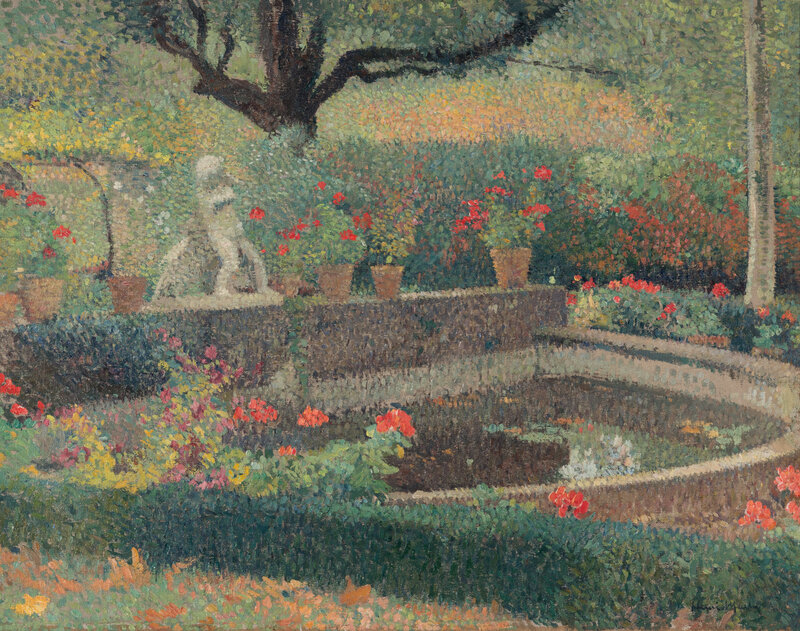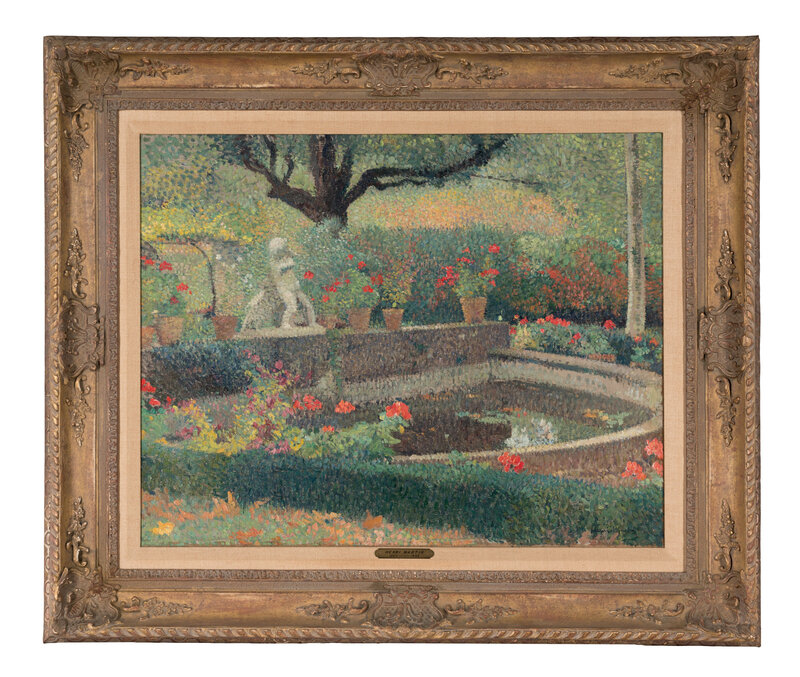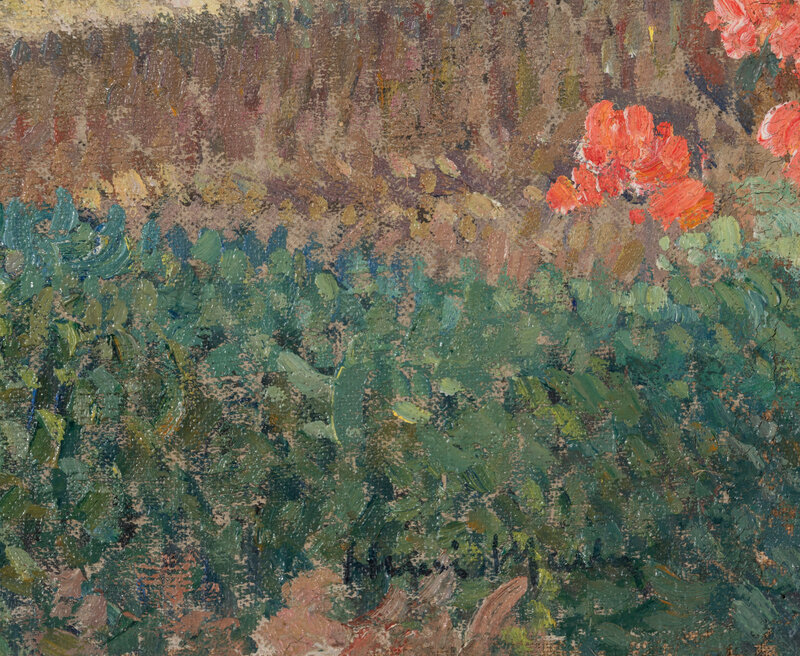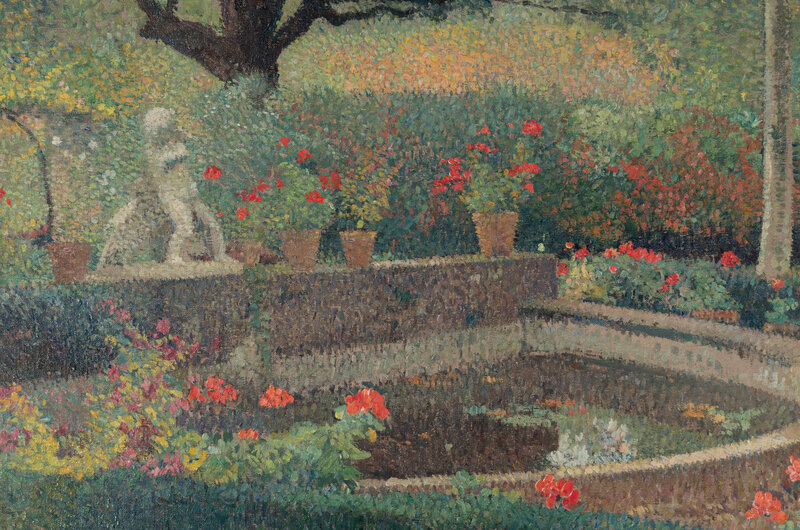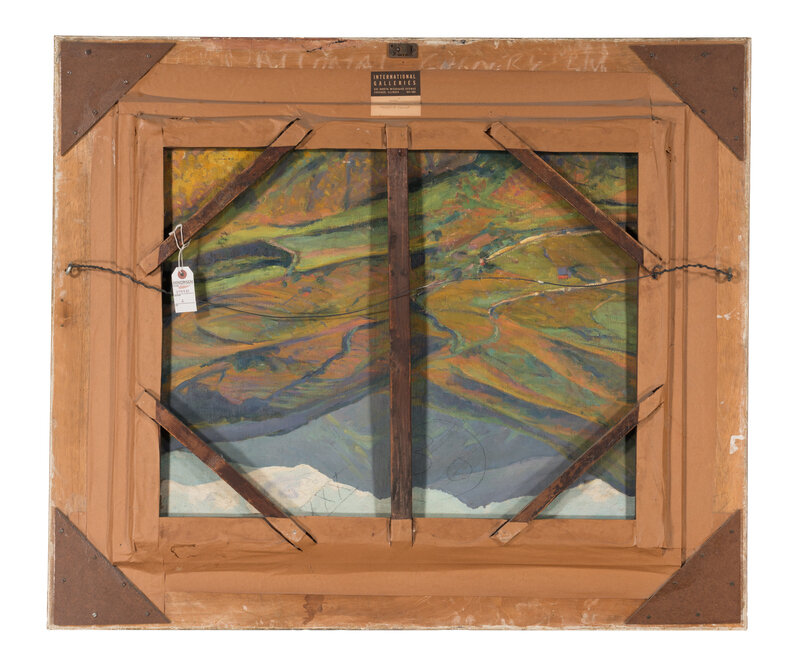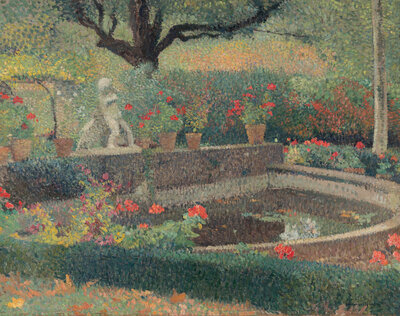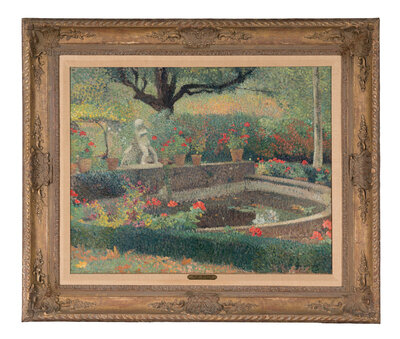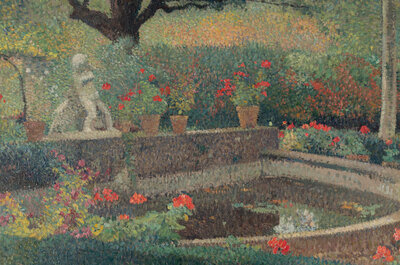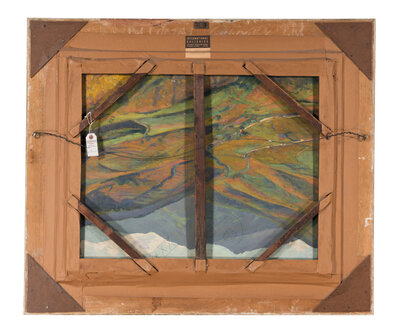Henri Jean Guillaume Martin
(French, 1860–1943)
Bassin et Fleurs (Le Grand Basin de Marquayrol); with Landscape Study on the reverse (A Double-Sided Work)
Sale 2087 - Impressionist and Modern Art, Featuring the Collection of John and Rosetta Gernon
Oct 28, 2024
12:00PM ET
Live / Philadelphia
Own a similar item?
Estimate
$150,000 -
250,000
Price Realized
$152,400
Sold prices are inclusive of Buyer’s Premium
Lot Description
Henri Jean Guillaume Martin
(French, 1860–1943)
Bassin et Fleurs (Le Grand Basin de Marquayrol); with Landscape Study on the reverse (A Double-Sided Work)
Oil on canvas
Signed Henri Martin (lower right)
25 3/4 x 32 in. (65.4 x 81.3cm)
This lot is located in Philadelphia.
Property from the Estate of Dr. John Talbot Gernon and Mrs. Rosetta Place Gernon.
We wish to thank Madame Marie-Anne Destrebecq-Martin for confirming the authenticity of the present work, which will be recorded in the forthcoming Catalogue Raisonné of Henri Martin's work. A Certificate of Authenticity (Lettre d'Inclusion au Catalogue Raisonné) will accompany the Lot.
Please note this work will be on view at our New York City office, at 32 E. 67th Street, from October 24th to October 26th (included), 9am-5pm.
Provenance:
International Galleries, Chicago, Illinois.
Acquired directly from the above by the present owner.
Lot Essay:
After many years spent in Paris, where he honed his skills as a draftsman and exhibited in numerous galleries and Salons, Henri Martin returned to his native South in 1900, when he purchased a large 17th century estate in Labastide-du-Vert called Marquayrol, just north of Cahors, near Toulouse. This relocation marked an important new chapter in the artist’s life and career. Much like Monet in Giverny, Martin immersed himself in a lush and warm environment that enabled him to rekindle his love for bold, strong colors. It also marked a departure from his oversized allegorical and mythological scenes, to a newfound passion of depicting the surrounding landscape, and paying tribute to Nature on canvas.
Marquayrol stood as a sanctified haven for Martin, who stayed there with his family for half of the year. Once at home, the artist spent most of his time outside, recording every feature of the house throughout all seasons, soon transforming them into pictorial motifs forever associated with Martin’s oeuvre. Among them are the red pergola, the terrace, the Italianate garden dotted with cypresses, as well as the three basins. The present work depicts the main fountain, Le Grand Bassin, closest to the house and in which Martin's sons used to bathe in the hot summer. Here rendered in the shade, it is crowned by a decorative sculpture, l'Enfant à l'Oie, an important ancient greek sculpture which was very popular during Martin's lifetime (a Roman copy dating from the 2nd Century B.C. is at the Louvre). The basin is surrounded with geraniums and other potted plants. With its luminous and calibrated touch, the scene stands as a vision of harmony and serenity, which echoes the artist’s feeling towards his property. Devoid of any human figure, the picture acts as a testimony of Nature’s precious and fragile spectacle, revealing itself to an anonymous and invisible viewer as the sun dies out and the heat winds down.
In Marquayrol, Martin became obsessed with rendering atmospheric effects, and capturing the so-particular southern summer light, so fleeting and diffuse. The present work illustrates this quest for the ever-changing light as the basin is mostly in the shadows, which means the contours of the landscape, the flowers and the putto become softened. The tight crop of the painting, along with its limited color palette, essentially made of greens and reds, accentuate this feeling and transform it into an almost abstract work. Yet, the blended picture denotes an embroidered quality, replete with singular dots of color as luminous as jewels.
Although Martin is often considered a Pointillist, his technique does not follow the scientific precepts once established by Seurat and later carried out by Signac. Rather than methodically juxtaposing complementary dots of color next to each other, Martin aimed mostly at decomposing the brushwork, so as to make the canvas vibrate and capture the shimmering light. As his son Jacques Martin-Ferrières once said: "If I look at a fragment of Henri Martin's canvas... I immediately recognize it. I see a great number of dots of different colors, as precious and rare as precious stones. His palette is an enchantment. Many different interminglings of colors make a rare and rich harmony... And it is much more difficult to find a good harmony of colors when representing nature than to assemble some nice colors, representing nothing. In here lies the gift of Impressionists and that is why there are so few." (Jacques Martin-Ferrières, Henri Martin, Paris, 1967, p. 42).
Condition Report
Auction Specialist
